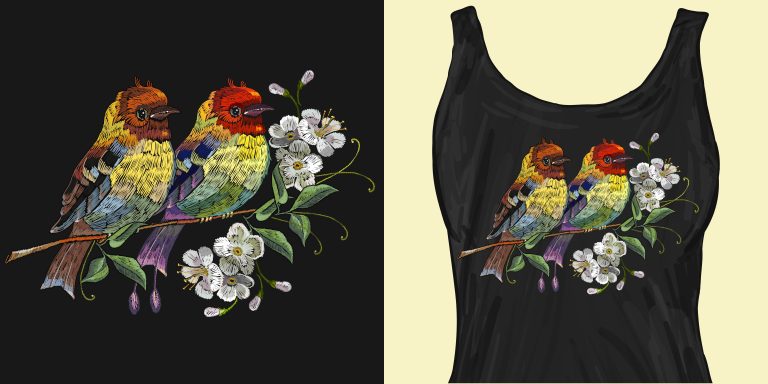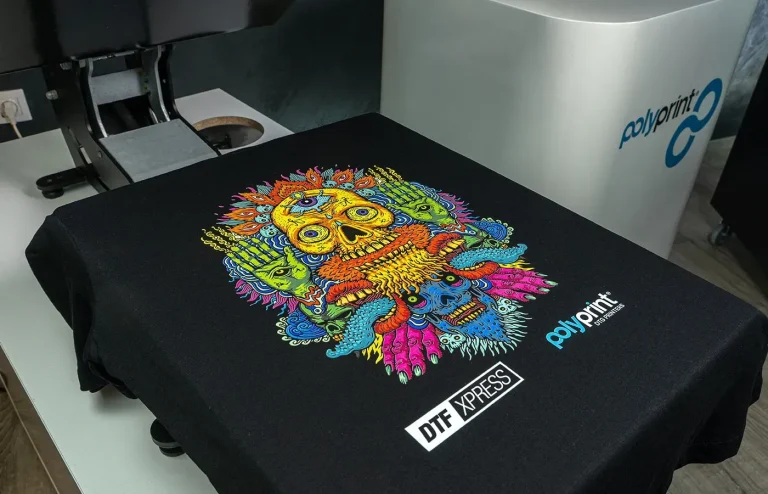DTF Prints: Tips for Maximizing Color and Quality
DTF prints, or Direct-to-Film prints, are revolutionizing the world of textile printing by offering incredible color depth and quality. This innovative printing method allows for a wider range of colors and patterns to be applied to fabrics, making it a favorite among designers and businesses alike. To achieve perfect DTF prints, a solid grasp of essential techniques, including proper color management and selecting quality materials, is vital. By focusing on DTF printing tips and understanding the optimal DTF print settings, users can elevate their projects to new heights. As we explore the nuances of DTF printing, you’ll discover strategies to maximize color richness and ensure every print turns out beautifully.
Often referred to as direct film printing, this modern technique is gaining traction among fabric printing enthusiasts. Many professionals now seek tips on maximizing the capabilities of their printing systems, particularly concerning color accuracy and overall print quality. Utilizing appropriate DTF print settings can significantly influence the vibrancy and durability of the final product. Furthermore, with advancements in color management practices tailored for this innovative method, achieving professional results has never been more accessible. As we delve deeper into the realm of fabric printing, you’ll learn how to harness these dynamic techniques for stunning visual outcomes.
Understanding Direct-to-Film Printing
Direct-to-Film (DTF) printing has rapidly gained traction as a favored method for transferring images to fabric. This innovative technique operates by printing a design onto a special film, which is then transferred onto various substrates using heat and pressure. Unlike traditional methods, DTF printing allows for greater detail and vibrancy, making it an ideal choice for producing high-quality graphics. Furthermore, DTF prints can adhere to a variety of materials, including cotton, polyester, and blends, making this method incredibly versatile for apparel and fashion industries.
A key advantage of DTF printing lies in its capability to produce bright, eye-catching colors. With the correct settings and materials, the prints can exhibit stunning depth and clarity. As DTF technology evolves, the use of specialized inks and high-quality films continues to enhance print results, providing users with a competitive edge in a saturated market. Understanding the fundamentals of DTF printing is essential for anyone looking to excel in fabric printing.
Frequently Asked Questions
What is Direct-to-Film (DTF) printing and how does it work?
Direct-to-Film (DTF) printing is a modern technique that allows for high-quality prints on various fabrics. The process involves printing designs onto a specially coated film using eco-solvent or pigment-based inks, which are then transferred to the fabric using heat and pressure. This method is renowned for its vibrant colors and durability, making it a popular choice for custom apparel.
What are some essential DTF printing tips for beginners?
For beginners in DTF printing, it’s important to focus on selecting high-quality DTF films and inks to ensure vivid results. Familiarize yourself with effective color management techniques to maintain color accuracy. Additionally, optimize your print settings by testing various DPI to find the best quality that suits your designs. Regular experimentation with materials and methods will help you improve your DTF printing skills.
How can I manage colors effectively in DTF printing?
Effective color management in DTF printing involves calibrating your printer and integrating specific color profiles into your workflow. Use calibration tools to ensure that the colors you design on screen match the final output. Regularly adjusting your design files to fit DTF printing standards will also enhance color consistency, leading to more accurate and vibrant prints.
What should I consider when optimizing DTF print settings?
When optimizing print settings for DTF printing, consider adjusting the DPI (Dots Per Inch) according to the complexity of the design. Higher DPI settings yield better detail but may slow down the printing process. Experiment with different settings to find the right balance between quality and efficiency. You can also refer to your printer’s recommended settings as a guideline.
Why is pre-treatment important in DTF printing?
Pre-treatment is crucial in DTF printing as it enhances ink adhesion to the fabric, preventing issues like ink bleeding or poor adherence. Different fabric types such as cotton and polyester require specific pre-treatment solutions. Proper pre-treatment ensures more vibrant and long-lasting prints, making it an essential step in the DTF printing workflow.
What are the best practices for curing DTF prints?
Curing DTF prints correctly is vital for ensuring durability and a soft feel. Follow the manufacturer’s recommended curing temperatures and times closely. Using a heat press allows for better control over these variables, ensuring thorough curing without damage to the fabric. Consistent curing practices will result in more resilient prints that maintain their quality over time.
| Key Point | Description |
|---|---|
| Choosing Quality Materials | Opt for high-grade DTF films and premium, eco-solvent inks for vibrant and lasting prints. |
| Proper Color Management | Ensure accurate color translation from screen to print using calibrated monitors and color profiles. |
| Pre-treatment for Fabrics | Select appropriate pre-treatment solutions based on fabric type to enhance ink adhesion. |
| Optimizing Print Settings | Adjust print settings like DPI to balance quality and efficiency depending on the design complexity. |
| Curing Techniques | Control temperature and time during curing for durability and soft feel, ideally using a heat press. |
| Post-processing Techniques | Follow washing and drying best practices to maintain vibrancy—avoid harsh detergents. |
| Experimentation and Testing | Regularly test different materials and settings and keep samples for future reference. |
Summary
DTF prints involve a meticulous process of maximizing color and quality through a combination of expert techniques. From selecting top-tier materials, such as high-grade DTF films and eco-solvent inks, to the careful management of colors and print settings, every step is crucial in achieving outstanding results. Pre-treating fabrics and employing correct curing methods ensure that prints not only look good but also stand the test of time. Furthermore, attention to post-processing and a commitment to continual experimentation will allow printers to refine their techniques over time. Emphasizing these key practices will ensure that your DTF printing endeavors yield vibrant, durable, and high-quality products, setting you apart in a competitive market.







